Introduction
In March of 2020, the pandemic of COVID-19 bursted out. After this moment, almost all nations of the world asked their citizens to stay inside their homes to reduce the cases but, mostly to stay safe. However, across the whole world, many women were not really safe inside their houses. In this period of the first lockdown, a video went viral showing a woman, experiencing physical abuse, trying to ask for help without leaving a digital trace.
The Problem
Gender violence is a violence that women experience daily. The most shocking part is that most violent gender crime cases are never reported. Besides physical abuse in their homes, women are the victims of many expressions of gender violence through their whole life. In fact, in Europe since the age of 15 years old 1 in 3 women has experiences physical and/or sexual violence, 1 in 20 women has been raped and 1 in 2 women has experienced sexual harassment.
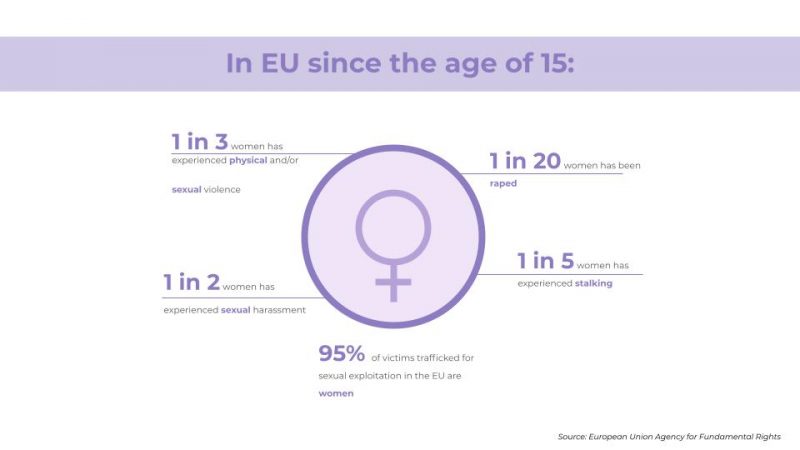
Gender violence data
Many countries have governmental (or non-profit) organizations supporting victims of gender violence, while the national police of each country is keeping track of the cases that occur. However, the system is not working properly. In fact, every year almost 80% of rapes in Spain are not reported, while in Greece more than 4.500 rapes are happening while only 200 are denounced. At the same time, only 23% of the abusers end up convicted for their crimes.
What is the reason for so many unreported crimes? According to Amparo Diaz, domestic violence attorney: “The fear of not being believed and a lack of confidence in the justice system are paralyzing. The victim’s story is bound to be questioned and they are then re-victimized.”
The crime of rape or physical abuse for many women is still a taboo that primarly affects the victim. The sad truth today is that in order to believe her, society needs proof that: a) she did not provoke the perpetrator, b) she tried to resist, c) she was not dressed provocatively and finally d) she did not want to draw attention by claiming that something horrible happened to her or to avenge the perpetrator by lying. Victims of rape are only not to blame when we imagine them as completely cut out from any erotic element, or when they end up dead (and sadly, sometimes not even then).
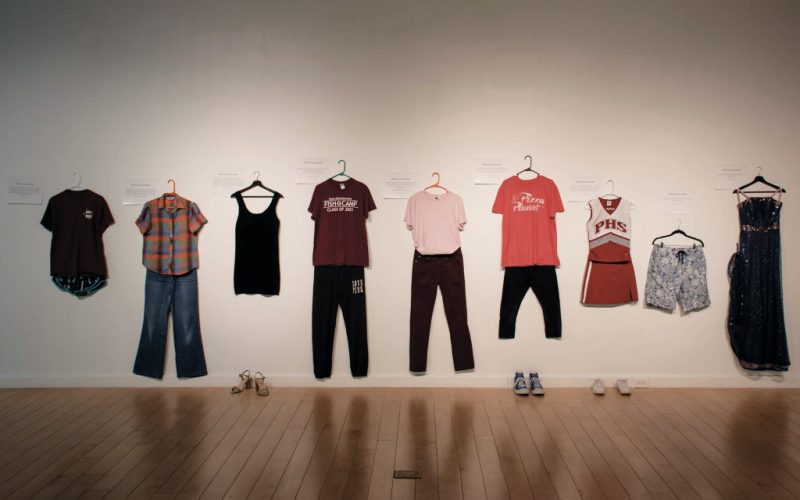
“What where you wearing? ” art exhibit
For all these, women that experience gender violence or have been sexually abused, are afraid to talk about it. Going to the police to report it usually means that she will need to relive her experiences describing them to police officers, which sometimes is really embarrassing. Meanwhile, a lot of women fear the exposure that they will get for talking about their problem, and that society will stigmatize them. Finally, in a lot of cases, women are afraid of their abuser since they are dependent financially or emotionally from him.
The two main problems regarding violence on women is firstly to recognize what is violence and if you are experiencing some type of violence and secondly, the lack of knowledge of society over these issues, leading to crimes over women in many cases.
One other issue arising from all this is that there is a severe problem of quantification of the data. The data being collected from different countries are not comparable, in fact only 10 countries of EU have comparable data. Besides that, as mentioned before, there is a serious lack of denounces for many reasons leading to account only the crimes actually reported or convicted. Finally, every country has different laws regarding this issue with no consensus. For example, countries that dont consider murder of a woman as gender violence, or countries that don’t recognize rape as sexual intercourse without consent.
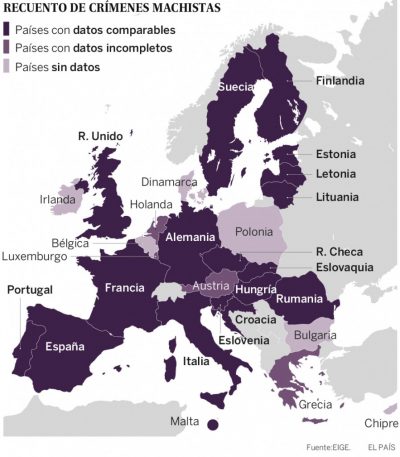
Non trustable data
However, gender violence data is very important if we want to try solving this issue. Apart from the better informed understanding of the issue that we will have, it will also be easier to open up the conversations regarding gender violence across governmental administrations.
The truth is that we are lacking reports and data data because women fear to share their experiences with the society and they are constantly revictimized. They don’t really believe in the justice system due to the lack of abusers convictions. The other issue is that many times women don’t even realize that they are the victims of gender violence.
Disruption in the system
This is the story of Ana Orantes, a victim of gender violence. After 40 years of marriage with physical and psychological abuse, in 1996 laws changed and Ana Orantes managed to divorce. Yet, the court forced her to continue living in the same house with her husband. In 1997, she became the first woman in Spain to denounce publicly in Television that her ex-husband hit her. 13 days after her appearance on television, her ex-husband hit her, tied her to a chair, covered her in gasoline and burnt her alive. Due to her appearance in national television and along with her brutal murder as a consequence, in 1999, Spanish government created a law against domestic violence. Finally, in 2004, the Organic Law of Measures to Integral Protection against Gender Violence was approved.

Ana Orantes: A disruption in the system
Many years after this, and more specifically on October 15 of 2017 american actress Alyssa Milano, inspired by one friend, posted on Twitter: “If all the women who have been sexually harassed or assaulted wrote ‘Me too‘ as a status, we might give people a sense of the magnitude of the problem“. After a short while, a huge number of posts and responses from many women and high-profile celebrities soon followed. After millions of people started using the phrase and hashtag in this manner in English, the expression began to spread to dozens of other languages, revealing in many countries a small part of the dimensions of the problem of gender violence.
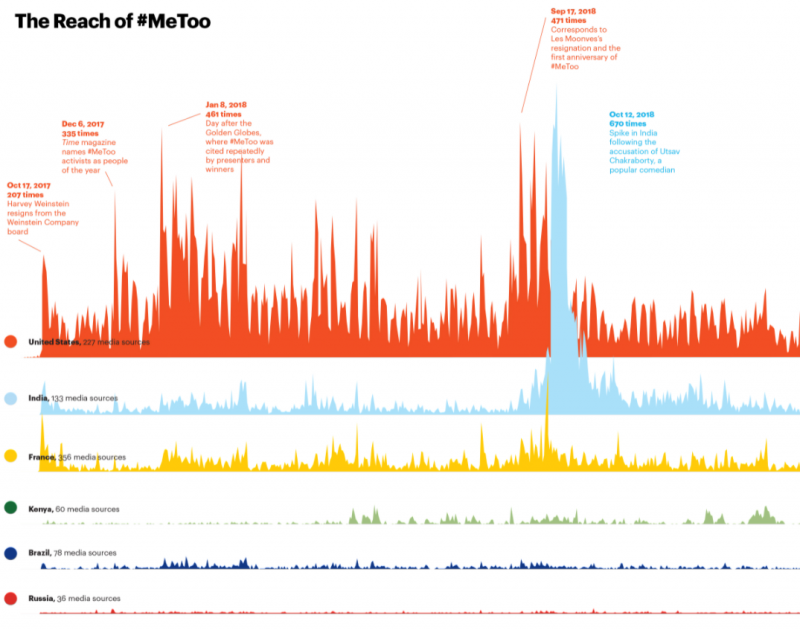
The reach of me too, Columbia Journalism Review
Sischain: A Sisterhood blockchain
Given all these, we wanted to find a way to help and support the victims of gender violence. We want to move the society’s position from measuring denounces to measure the need for help but this can not be possible without changing our perspective from problem solving to support giving.
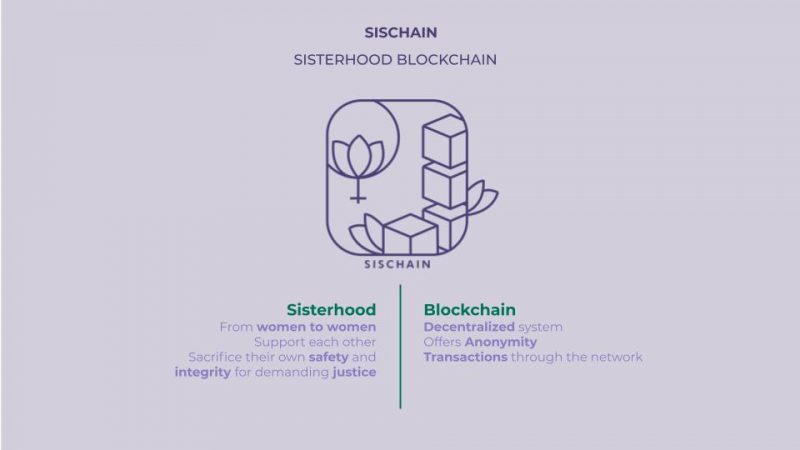
Sischain: A sisterhood blockchain
What is sisterhood?
We introduce the Sisterhood Blockchain that will create a community that offers psychological or material support to women under gender violence. Sisterhood “Is an experience of women that drives the search of positive relations and existential and political alliance, from body to body, to contribute with specific actions to the social elimination of oppression and mutual support in order to achieve general and individual empowerment of women”.
Why Blockchain?
The most important aspect of using blockchain for this project is the anonymity it can offer. Women in need of help can contact other women through our Sisterhood blockchain platform to get help; sometimes the only thing you need is to talk about it without being embarrassed and not feel alone. Besides that, the decentralization and the use of transactions between the members of the blockchain are also two important factors to consider.
Sischain: A Sisterhood blockchain
Our aim is to spread Sisterhood blockchain in the city. Thus, we need to find a place that you can access privately, there are no men allowed and there is an easy visual accessibility in order for our “ad”(that will be a QR code sticker) to catch your eye. The place that combines all these characteristics is the women’s bathroom. Besides that, the graffiti and sticker culture is evident in the bathrooms and it has happened before with condom, toothbrush and tabon vending machines.
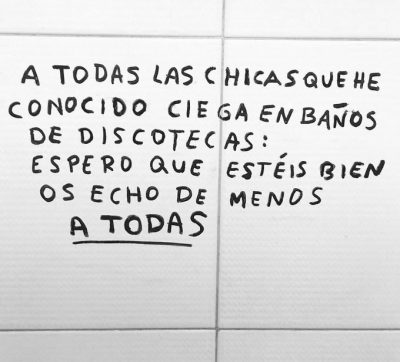
Womens bathroom graffiti
So, our aim is to use the women’s bathrooms in the ground floors of the city: From schools, religious institutions and hospitals to hairdressers, bars and clubs, to create a network where women in need can access our platform. Women bathrooms have always been “a safe place” for us growing up, as well as a place to meet other women. “To all the girls that I met drunk in club bathrooms: I hope you are doing fine. I miss you all!”
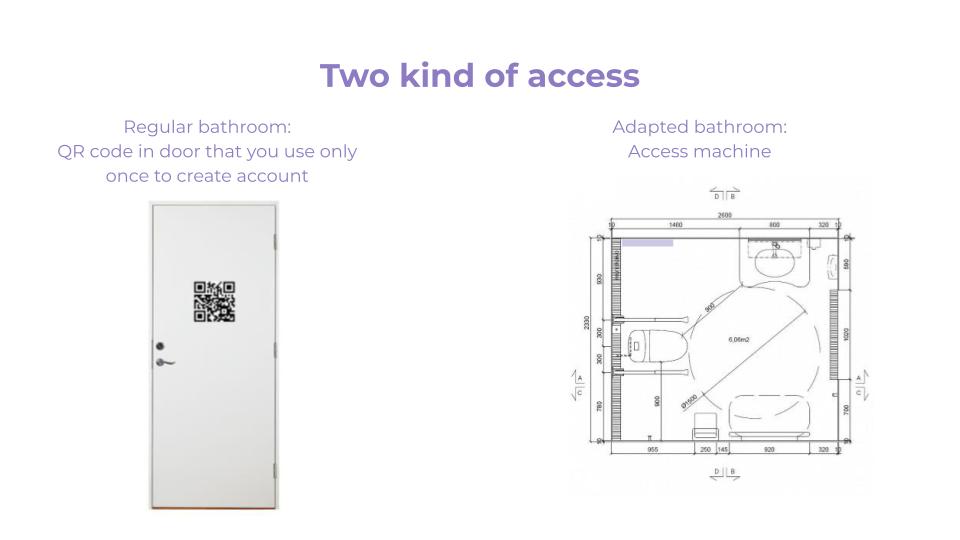
In order to access our platform there are two ways: One is through the regular women’s bathroom with a QR code on the door that you use only once to create your wallet, and the second is an access machine in the adapted bathrooms that usually have more space and are combined with womens bathrooms. The reason for using the girls bathroom is that: No mens are allowed, there is a visual accessibility, there is a graffiti culture as mentioned before, access machines have always been present and no one will see you access the blockchain
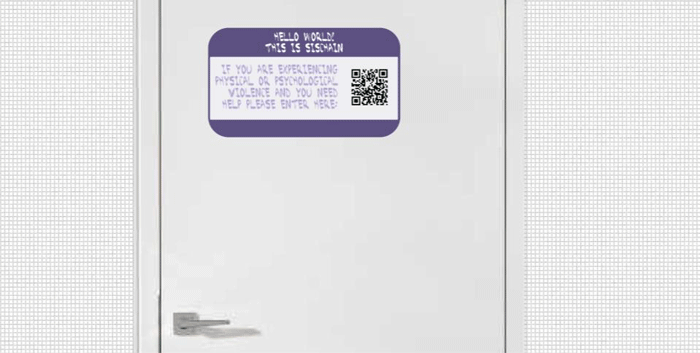
Access through bathroom sticker
Before explaining our methodology, firstly, we want to introduce our Sister tokens:
- Sis Coin is a payment token that is equivalent to 100 euro
- Sis Time is our utility token that is equivalent to 1 hour of a sister’s time. This time can be spent in the physical safe network, or through platforms of communication such as whatsapp, zoom or facebook.
- Big Couch is an asset token that is equivalent with 1 day at a safe place and finally,
Little Couch is an asset token that can only be requested with the Big Couch, as it is equivalent to 1 day at a safe place for children.
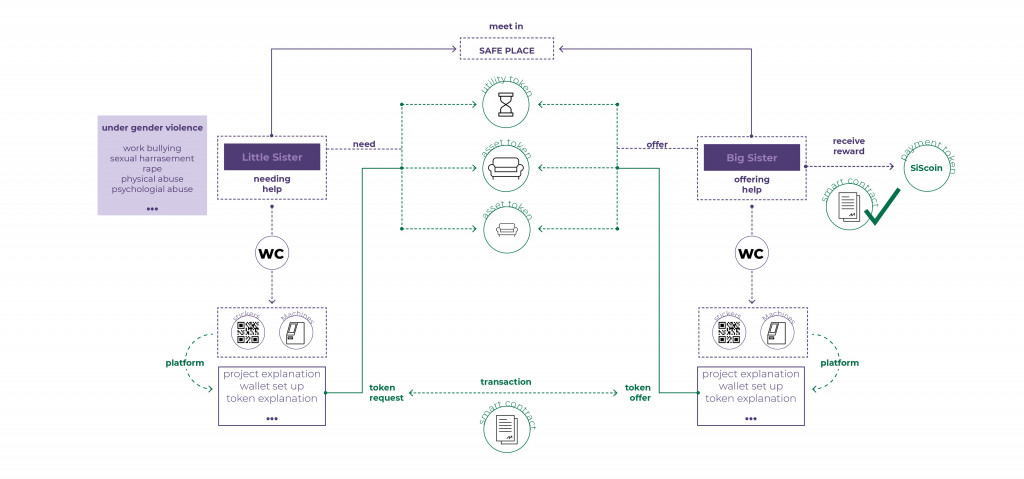
We will have two kinds of users for our blockchain: Little sisters or women under gender violence that need help, and Big sisters that are the women offering help. Both of them will access the explanation of the project through the qr code or the access machine in the ground floor bathroom and they will receive instructions. They will be able to ask for tokens and create transactions through smart contracts that ensures the well behaviour of the users.
After using the QR code
When a woman scans the Qr Code she enters a platform and she can choose if she needs help or she wants to offer help. After that, she can find instructions on how to set up a wallet in metamask and request for tokens.
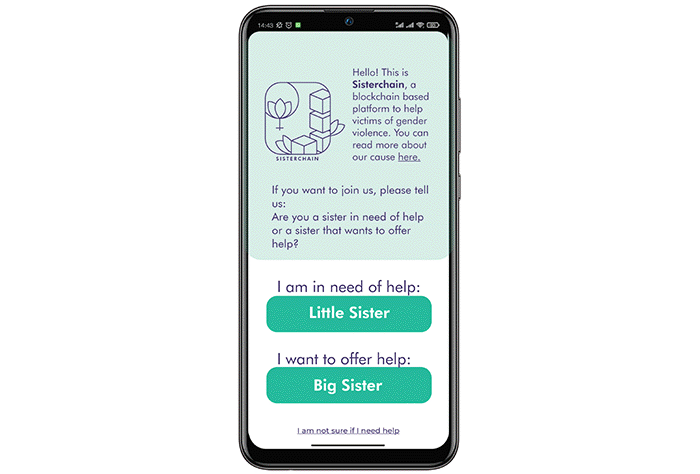
Platform for accessing blockchain
When her wallet is set up and she has requested for tokens, she needs to meet with a big sister to get verified. This meeting will happen in a safe place. Safe places are cafes, bars, restaurants etc, belonging to the sponsors and there will always be someone there that knows about sischain, and will defend the big sister or the little sister if something goes wrong. In this way, we will create a safe network that will spread throughout the city and women will know that in these places they can get support and pay with siscoin. In addition to this, big sisters can get rewarded with discounts in these places.
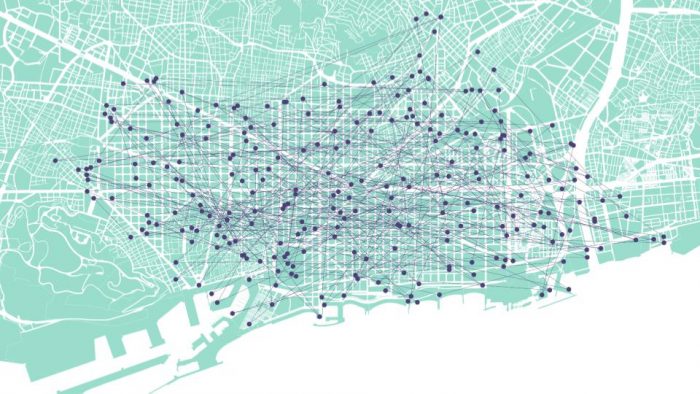
Safe network
Setting up the Sischain
Phase 1
In order to achieve a business model, first we will contact with businesses that have ground floor bathrooms: bars, clubs, hotels, hairdressers…. These will be our sponsors that will provide funds for the blockchain set up. A part of this fund will be for the developers salary that will create the blockchain digiltal infrastructure and platform. This will set up our Digital Blockchain infrastructure. Another part of the funding will be used to buy access machines and print the QR stickers for the bathrooms. After printing and buying the machines, these elements will be distributed in the sponsors’ bathrooms to guarantee access to the Sischain. In exchange for their funds, sponsors will become safe places and create our safe network. At last but not least, stickers will also be added in the dark in other ground floor bathrooms that don’t sponsor our project. In that sense our access infrastructure will become bigger. In the end we will have a complete Offchain Infrastructure that will be continuously growing.
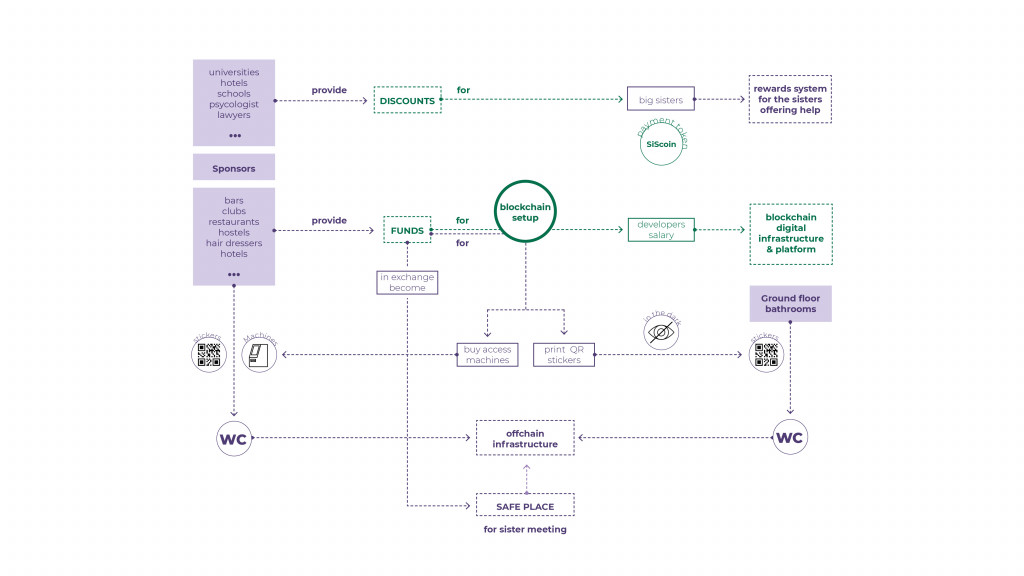
Phase 1: Setting up the blockchain
We will have another kind of sponsors, that will offer discounts to the Big sisters in exchange of their support. With this rewards, Big sisters will have discounts in masters, education system and other kind of services. The discounts will create a chain reaction that when Little sisters feel better after using our blockchain and some time to recover, they will become Big sisters and help other women in need. In order to donate funds an manage them, we created a Safe through Gnosis and the funds . This safe will be managed by the sponsors of our project and will distribute the funds through voting. For distributing them it will be needed to have a consensus on what the money should be spend on.
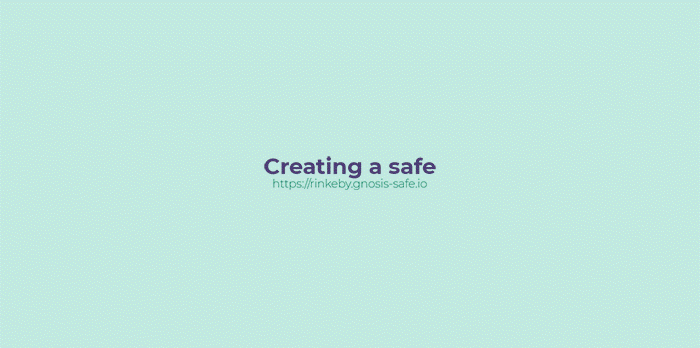
Safe procedure through Gnosis
Phase 2
In phase 2 the Blockchain maintenance will be self sufficient and we will do this by adding the possibility of Little sisters to ask for economic help. In this case, the funds of our “safe place” sponsors will not be to maintain or create blockchain infrastructure but to give economic support to the Little sisters.
The Little sisters will be only able to ask for economic help after they have asked for utility or asset tokens and their smart contracts are finished. This economic help (for renting an apartment, paying their kids school,…) will be requested through our dandelion DAO that will be based in liquid democracy: The little sisters will delegate their votes to Big sisters to avoid conflicts (they cannot vote for themselves to get the economic help).
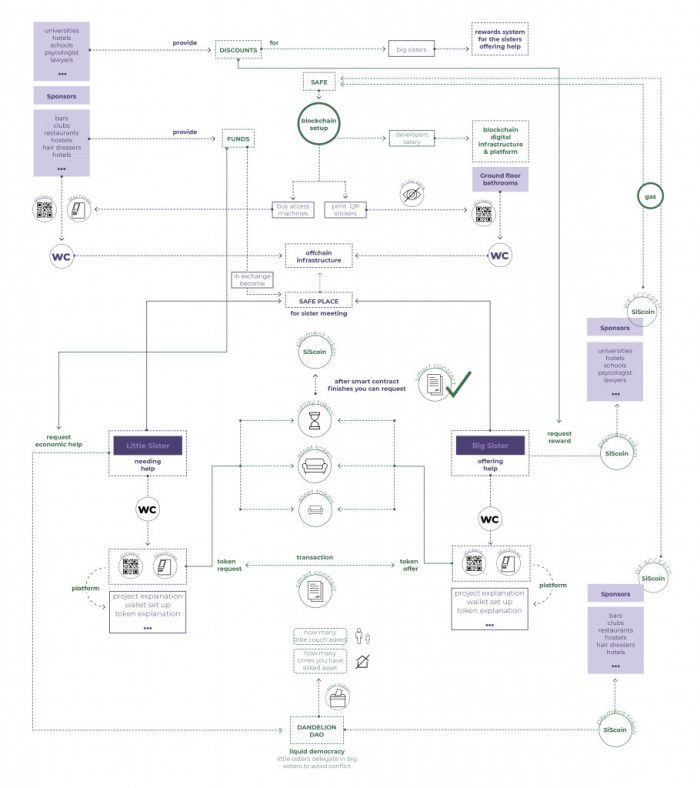
The voting system will be considered through two factors: how many little couches has the sister have asked before (as an indicator that the sister has kids and has priority) and the second factor is how many times she has asked for an asset token (that takes into account how much time she has been from home to home in an uncertain situation). The Little sister with more votes will get her Siscoins and will be able to spend them in the sponsors to use them to get a more permanent place to stay until she recovers, to put her kids in school and so on.
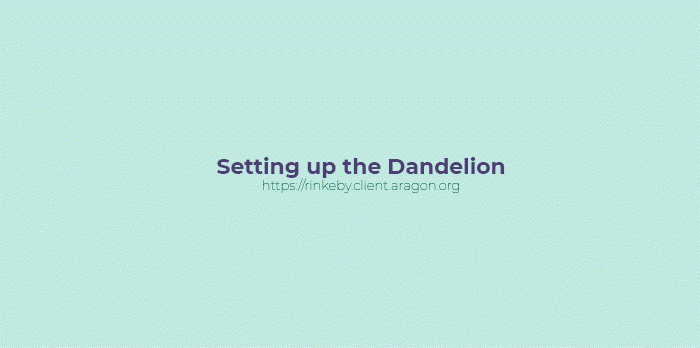
DAO: Liquid democracy
Benefits
- Little sisters: The little sisters will have support from other women by spending time together. They will be able to scape from abusive situations through staying in a sisters house. They will defend their right to intimacy and prevent from exposure and in the end they will get better and become a Big sister to help other women
- Big Sisters: They will get recognition of the caring functions that the society doesn’t recognize. They will get discounts from hotels, universities, schools and so on and also they will hepl other women that have gone through something that they have experienced before.
- Sponsors: They will have good publicity among women through safe space concept and discounts and they will increase the number of users and customers thank to safe space and discounts through siscoin
- Database: A new kind of database that comes from the transactions of the blockchain that measures the need of help instead the number of denounces will be created.
And as a final image, we magine a future where our Sischain will become offchain again, and we will find anonymous messages from users through bathroom culture to enhance other women to use our Sischain.
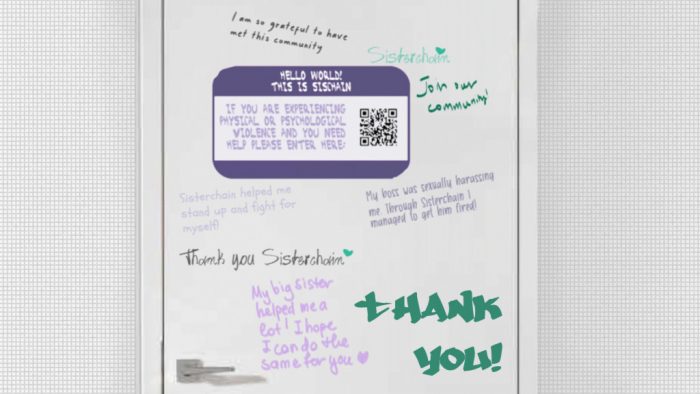
Offchain Sischain
Cryptourbanomics model
Why do we need blockchain?

Our Blockchain Characteristics
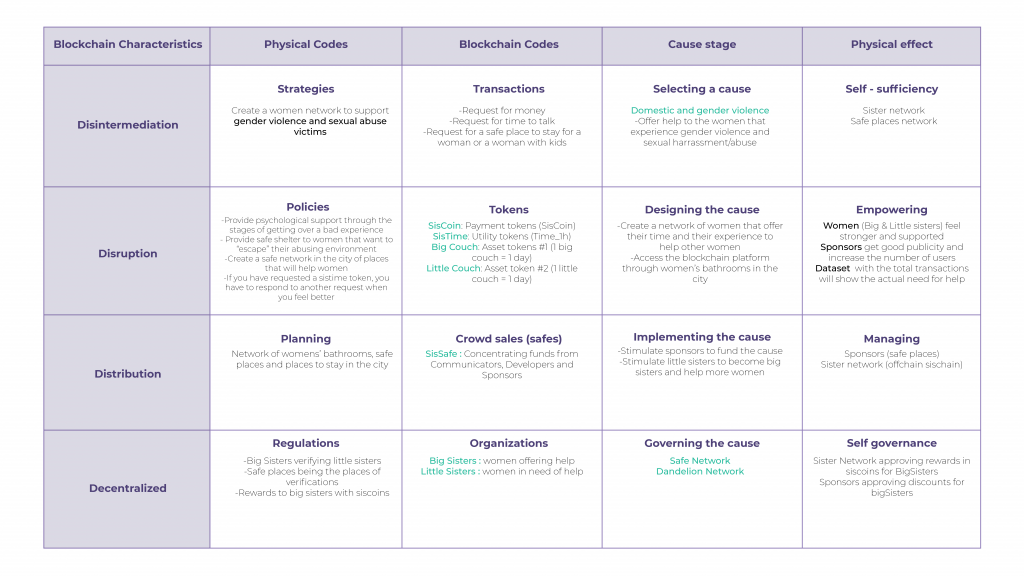
Tokens parameters

Sischain: Sisterhood Blockchain to fight gender violence is a project of IAAC, Institute for Advanced Architecture of Catalonia developed at Master in City & Technology in 2020/21 by students: Adriana Aguirre Such & Stephania Maria Kousoula and faculty: Maria-Luisa Marsal Llacuna